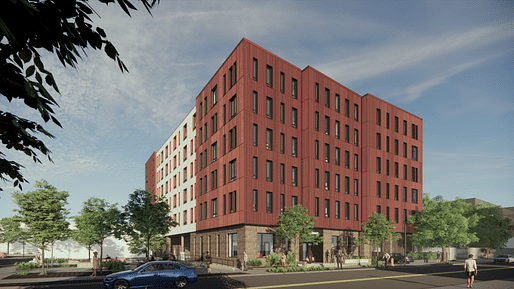

A pair of statewide incentive programs in Massachusetts is driving a surge of apartment buildings designed to the highly energy-efficient passive house standard.
In the past year, families have moved into 257 affordable housing units in complexes built to the standard, and about 6,000 additional units are now in various stages of development.
— Energy News US
The Commonwealth has been ramping up investment into the technology since 2018, when it instituted The Passive House Design Challenge that awarded a total of $1.73 million (or $4,000 per unit) to eight separate multifamily developments from Gloucester to Boston. Another initiative called Mass Save was launched the following year, offering an additional $5,000 per unit and helping architects to pursue some innovative projects including the new 1599 Columbus building in Boston from Utile.
Passive house techniques are supposed to be well-suited for such developments because of their ability to fit so many units inside the tighter building envelopes. They also offer the added benefit of energy savings, which are vital to low-income families in colder states like Massachusetts. One developer also sees it as a great way to deliver high-quality design to people who might otherwise be priced out of it.
“In 2022 there is [still] a lot of stigma around affordable housing,” he said. “We feel that if people can live in an attractively designed building that is also the greenest building in Gloucester, there’s a bit of pride in that.”
No Comments
Block this user
Are you sure you want to block this user and hide all related comments throughout the site?
Archinect
This is your first comment on Archinect. Your comment will be visible once approved.